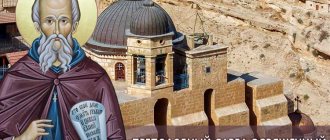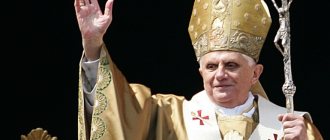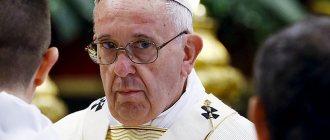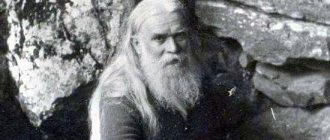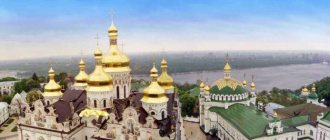Not to be confused with Antipope Clement VIII.
head of the Catholic Church and ruler of the Papal States (1536-1605) (reigned 1592-1605)
| Dad Clement VIII | |
| Bishop of Rome | |
| The Chosen One | January 30, 1592 |
| The papacy has begun | February 2, 1592 |
| The papacy is over | March 3, 1605 |
| Predecessor | Innocent IX |
| Successor | Leo XI |
| Orders | |
| Ordination | December 31, 1580 |
| Consecration | February 2, 1592 by Alfonso Gesualdo di Conza |
| Created cardinal | December 18, 1585 to Sixtus V |
| personal information | |
| Birth name | Ippolito Aldobrandini |
| Born | 24 February 1536 Fano, Marche, Papal States |
| Died | March 5, 1605 (1605-03-05) (age 69) Rome, Papal States |
| Previous post | Cardinal-Priest of San Pancrazio fury-le-Mura (1585–92) |
| Other popes named Clement | |
| Papal styles Pope Clement VIII | |
| Reference style | His Holiness |
| Conversational style | Your Holiness |
| Religious style | Holy father |
| Posthumous style | Nobody |
Pope Clement VIII
(Latin: Clemens VIII; 24 February 1536 – 5 March 1605), born
Ippolito Aldobrandini
, was Bishop of Rome and therefore head of the Catholic Church and ruler of the Papal States from 2 February 1592 until his death in 1605. Born in Fano, Italy.[1] A prominent Florentine family, he initially became known as a canon lawyer before being made Cardinal-Priest in 1585. In 1592 he was elected Pope and took the name Clement. During his papacy he brought about the reconciliation of Henry IV of France to the Catholic faith and was instrumental in creating an alliance of Christian peoples to resist the Ottoman Empire in what was known as the Long War. He also successfully ruled in a bitter dispute between the Dominicans and the Jesuits over the question of effective grace and free will. In 1600 he presided over a jubilee which saw many pilgrimages to Rome. He showed little mercy for his opponents, presiding over the trial and execution of Giordano Bruno and taking strict measures against Jews living in the Papal States. He may have been the first Pope to drink coffee. Clement VIII died at the age of 69 in 1605, and his remains now rest in the Roman city church. St. Mary Major.
Content
- 1 Early years
- 2 Cardinal
- 3 Church affairs 3.1 Clementine Vulgate
- 3.2 De Auxiliis
controversy - 3.3 Jubilee 1600
- 3.4 Canonizations and beatifications
- 3.5 Consistories
- 4.1 Relations with France and Spain
- 5.1 Law enforcement
Cardinal
Election of Pope Clemens VIII in 1592
, to Louis de Collery, Petit Palais (Paris)
He was made Cardinal Priest of S. Pancrazio in 1585 by Pope Sixtus V, who named him the chief penitentiary in January 1586 and in 1588 sent him as legate to Poland. He placed himself under the spiritual guidance of the reformer. Saint Philip Neri, who was his confessor for thirty years. Aldobrandini received Habsburg gratitude for his successful diplomatic efforts in Poland to secure the release of prisoners of Archduke Maximilian, the defeated pretender to the Polish throne.[3]
After the death of Pope Innocent IX (1591), another stormy conclave followed, in which a determined minority of Italian cardinals did not want to be dictated to by Philip II of Spain. Known to be highly intelligent, disciplined, and in tune with the inner workings of the Church,[4] the election of Cardinal Aldobrandini on January 30, 1592, was seen as a harbinger of a more balanced and liberal policy for the Pope in European affairs. He took the non-politicized name Clement VIII. He proved to be an able Pope, with unlimited capacity for work, a lawyer, attentive to detail, and a wise statesman, whose general aim of policy was to free the papacy from its dependence on Spain.[3]
Church affairs
Clementine Vulgate
Main article: Sixto-Clementine Vulgate
See also: Sistine Vulgate and Nova Vulgate
In November 1592 he published the Clementine Vulgate.[5] Was released with the bull Diploma Sacrorum
(November 9, 1592)[6] which stated that every subsequent edition should be equal to this one, not a single word in the text could be changed, not even the readings printed in the margins.[7]
This new official version of the Vulgate, known as the Clementine Vulgate [8]
or Sixto-Clementine Vulgate
,[8][9]
became the official Bible of the Catholic Church.
[10]
De Auxiliis controversy
In 1597 he founded the Congregatio de Auxiliis which was intended to settle the theological dispute between the Dominican Order and the Jesuits regarding the appropriate roles of efficient grace and free will. Although the debate tended to condemn Molinism's insistence on free will at the expense of efficient grace, the important influence of the Jesuit order - among other things - which, in addition to important political and theological power in Europe, also had various missions abroad (Misiones Jesuiticas in South America, missions in China, and etc.), prompted the Pope to refrain from officially condemning the Jesuits. In 1611 and again in 1625, decrees prohibited any discussion of the issue, although it was often avoided informally by the publication of commentaries on Aquinas.
Jubilee 1600
During the anniversary of 1600, three million pilgrims visited the holy places. The Synod of Brest took place in 1595 in the Polish-Lithuanian Commonwealth, thanks to which most of the Rusyn clergy and people were reunited in Rome.[3]
Canonizations and beatifications
Clement VIII canonized Hyacinth (April 17, 1594), Julian Cuenca (October 18, 1594), and Raymond Peñafort (1601). He beatified 205 people, 200 of whom were group martyrs; famous people whom he called the Blessed Ones, including Carlo Borromeo.
Consistories
Main article: Cardinals created by Clement VIII
The pope created 53 cardinals in six consistories during his pontificate; he named his two nephews Pietro and Cinzio Passeri as cardinals. Notable cardinals named during his reign included Camillo Borghese (his successor Pope Paul V), as well as famous theologians Roberto Bellarmino and Cesare Baronio.
Elections to the papacy
Pressure
The Papal Conclave in 1769 focused almost entirely on the problems of the Society of Jesus. During the previous pontificate, the Jesuits were expelled from Portugal and from all the courts of the House of Bourbon, which included France, Spain, Naples, and Parma. In January 1769, these authorities formally demanded the dissolution of the Society. Clement XIII planned to convene a consistory to discuss this issue, but died on February 2, the night before it was held.[4]
Now the general suppression of order was convinced by a faction called the "Cardinals of the Court", opposed by the diminished pro-Jesuit Zelanti
(“zealous”), who usually opposed the encroachment of secularism from the enlightenment.[1]
Much of the early activity was pro forma
as members awaited the arrival of those cardinals who had indicated they would be present. The Conclave met from February 15, 1769, heavily influenced by the political maneuvers of the ambassadors of the Catholic rulers opposed to the Jesuits.
Some pressure was unnoticeable. On 15 March, Emperor Joseph II (1765–90) visited Rome to join his brother Leopold, then Grand Duke of Tuscany, arriving on 6 March. The day after visiting St. Peter's Basilica, they took advantage of the opening doors of the conclave to admit Cardinal Girolamo Spinola. At the request of the Emperor, they were shown the ballots, the bowl in which they would be placed and where they would subsequently be burned. That evening Gaetano Duca Cesarini threw a party. It was the middle of Holy Week.[4]
Minister to King Louis XV of France (1715–74), Duke de Choiseul was a former French ambassador to Rome and was Europe's most experienced diplomat. “When one has a favor to ask of the Pope,” he wrote, “and one is determined to obtain it, two must be asked.”[ citation needed
] Choiseul's proposal was conveyed to the other ambassadors, and they were to put forward, in addition to the Jesuit question, territorial claims to the Property of St. Peter, including the return of Avignon and Comtat Venaissin to France, the duchies of Benevento and Pontecorvo to Spain, the expansion of the territory adjacent to the Papal States to Naples an immediate and final settlement of the controversial issue of Parma and Piacenza, which caused a diplomatic rift between Austria and Pope Clement XIII.
Elections
By 18 May, the judicial coalition appeared to have disintegrated as the respective representatives began negotiating separately with different cardinals. The French ambassador had previously proposed that any acceptable candidate be required to declare in writing the abolition of the Jesuits. The idea was largely rejected as a violation of canon law. Spain still insisted on making a firm commitment, although not necessarily in writing. However, such concessions can be immediately revoked by the Pope upon election. On May 19, 1769, Cardinal Ganganelli was elected as a compromise candidate, largely thanks to the support of the Bourbon courts, who expected him to suppress the Society of Jesus. Ganganelli, who was educated by the Jesuits, made no commitment but indicated that he believed dissolution was possible.[5] He took the papal name "Clement XIV". Ganganelli first received episcopal consecration in the Vatican on 28 May 1769 by Cardinal Federico Marcello Lante and was crowned pope on 4 June 1769 by Cardinal Protodeacon Alessandro Albani. He was succeeded by a cardinal priest. Buenaventura Fernandez de Cordoba Spinola.[6]
International relationships
Relations with France and Spain
Clement VIII
The most significant event of the reign of Clement VIII was the reconciliation with the Church Henry IV of France (1589–1610), after long negotiations, continued with great dexterity through Cardinal Arnaud d'Ossat, which resolved the difficult situation in France. Henry converted to Catholicism on July 25, 1593. After pausing to assess Henry IV's sincerity, Clement VIII withstood Spanish discontent and triumphantly acquitted Henry IV in the fall of 1595, ending thirty years of religious war in Russia. France.[3]
The friendship of Henry IV was of great importance for the papacy two years later, when Alfonso II, Duke of Ferrara died childless (27 October 1597), and the Pope decided to annex the fortress of the Este family into the states of the Church. Although Spain and Emperor Rudolph II encouraged Alfonso II's illegitimate cousin, Cesare d'Este, to oppose the Pope, Henry IV's threats kept them from providing him with any material assistance, and the papal army entered Ferrara almost unopposed.[3]
In 1598, Clement VIII gained greater recognition from the papacy by concluding a definite peace treaty between Spain and France at the Peace of Verven, [3] this ended their long struggle, and he made peace between France and Savoy as well.
Long War
Main articles: Holy League of Pope Clement VIII and Long War (1591–1606)
In 1595, Clement VIII initiated an alliance of Christian European powers to take part in a war with the Ottoman Empire, mainly fought in Hungary, which would become known as the "Long War" and would continue beyond Clement's own lifetime. With the assistance of the Pope, a treaty of alliance was signed in Prague with Emperor Rudolf II and Sigismund Bathory of Transylvania. Aron Voda of Moldavia and Michael the Brave of Wallachia joined the alliance later that year. Clement VIII himself provided the emperor with valuable assistance in men and money.[3]
Domestic policy
Law enforcement
Clement VIII was as energetic as Pope Sixtus V (1585–90) in suppressing banditry in the papal provinces of Umbria and Marche and in punishing the iniquity of the Roman nobility.[3] After ascending the papal throne in 1592, he immediately ordered the execution of several noble troublemakers. Among them were the most famous Troio Savelli, a descendant of a powerful ancient Roman family, as well as young and noble people. Beatrice Cenci, who killed her father - probably as a result of his repeated abuses. The latter case prompted many requests for clemency, which were rejected by the Pope, who gave the Cenci's confiscated property to his family.
Clement's strict methods also dealt with philosophical and religious issues. In 1599, he ordered the Italian miller Menocchio—who had formed the belief that God was not eternal but was once created out of chaos—to be burned at the stake. A more famous case was the heresy trial of Giordano Bruno, who was burned at the stake in 1600. Pope Clement VIII personally participated in the final stages of the trial, inviting the Cardinals in charge of the case to continue the verdict.
Anti-Jewish measures
Clement VIII tightened measures against the Jewish inhabitants of his territories. In 1592 the papal bull Sperm saepe accidere
banned the Jewish community of Comtat Venaissin from Avignon, a papal enclave, from selling new goods, putting them at an economic disadvantage.
In 1593, the bull Caeca et Obdurata
repeated Pope Pius V's 1569 decree prohibiting Jews from residing in the Papal States outside Rome, Ancona and Avignon.
The main effect of the bull was to evict Jews returning to areas of the Papal States (mainly Umbria) after 1586 (following their expulsion in 1569) and expel Jewish communities from cities such as Bologna (which had been included under papal rule since 1569) .[eleven] The bull also alleged that the Jews in the Papal States engaged in usury and exploited the hospitality of the predecessors of Clement VIII, "who, in order to lead them out of darkness to the knowledge of the true faith, thought it expedient to show them the mercy of Christian piety" (referring to Cristiana Pietas
).[12 ]
With the bull Diploma Hebraeorum malitia
a few days later, Clement VIII also forbade the reading of the Talmud.[13]
Pontificate
The policy of Clement XIV was from the very beginning calculated to smooth over the gaps with the Catholic crowns that had arisen during the previous pontificate. The dispute between secular and spiritual Catholic authorities was perceived by the church authorities as a threat, and Clement XIV worked to reconcile European sovereigns.[1] By submitting the Pope's claims to Parma, Clement XIV achieved the restitution of Avignon and Benevento, and in general he managed to put relations between the spiritual and secular authorities on a more friendly basis. The Pontiff continued to suppress the Jesuits, writing a decree to this effect in November 1772 and signing it on July 21, 1773.[7]
Relations with Jews
His accession was welcomed by the Jewish community, who believed that the man who, as Counselor of the Holy Office, had declared them, in a memorandum dated March 21, 1758, innocent of a slanderous charge, would be no less just and humane to them upon the throne of Catholicism. Appointed by Pope Benedict XIV to investigate allegations against the Jews of Janople, Poland, Ganganelli not only refuted the claim, but also showed that most such claims since the 13th century were unfounded. He relied to some extent on the already sainted Simon of Trent in 1475 and Andreas of Rinn, but noted the time elapsed before their canonization as an indication that the veracity of the accusations was in serious doubt. Ganganelli concluded his memorandum by reminding the Christians that they themselves were once accused by the pagans of the same crime, as testified by Tertullian, Minucius Felix, Theodoret and Rufinus.[8]
Two months after his accession, Clement XIV removed the Roman Jews from the jurisdiction of the Inquisition and placed them under the jurisdiction of the "Vicariato di Roma" (5 August 1769).[8]
Suppression of the Jesuits
Main article: Suppression of the Society of Jesus
The Jesuits were expelled from Brazil (1754), Portugal (1759), France (1764), Spain and its colonies (1767), and Parma (1768). With the coming to power of the new Pope, the Bourbon monarchs insisted on the complete suppression of the Society. Clement XIV tried to reassure his enemies by his apparent unfriendly treatment of the Jesuits: he refused to meet with the superior general, Lorenzo Ricci, removed him from the administration of the Irish and Roman colleges, ordered them not to accept novices, etc.[9]
The pressure grew to such an extent that Catholic countries threatened to break away from the church. Clement XIV eventually yielded "for the peace of the Church and to avoid the separation of Europe" and suppressed the Society of Jesus with a brief Dominus ac Redemptor
dated July 21, 1773[10] However, in non-Catholic countries, especially Prussia and Russia, where papal authority was not recognized, the order was ignored. This was the result of a series of political moves rather than a theological debate.[11]
Mozart
Pope Clement XIV and the customs of the Catholic Church in Rome are described in letters from Wolfgang Amadeus Mozart and his father Leopold Mozart, written from Rome in April and May 1770 during their travels in Italy. Leopold found the higher clergy insultingly arrogant, but was received along with his son by the pope, where Wolfgang demonstrated an amazing feat of musical memory. The papal chapel was famous for the performance of Miserere mei, Deus
17th century composer Gregorio Allegri, whose music could not be copied outside the chapel under penalty of excommunication. 14-year-old Wolfgang was able to completely decipher the composition after one hearing. Clement made the young Mozart a knight of the Order of the Golden Spur.[12]
Activity
Clement XIV elevated sixteen new cardinals to the cardinalate in the twelve consistories including Giovanni Angelo Braschi,[13] who succeeded him.
The pope did not perform canonizations during his pontificate, but he did beatify a number of individuals.
- 4 June 1769: Francis Caracciolo[14]
- 16 September 1769: Giuliana Puricelli of Busto Arsizio, Bernard of Baden[15] & Catherine Pallanza[16]
- 1771: Tommaso Bellacci
- 14 December 1771: Martyrs of Otranto
- 8 June 1772: Paul Burali d'Arezzo
- 29 August 1772: John gave Bastone
- 1773: Pope Benedict XI (formal beatification after Pope Clement XII confirmed the cult)
- 1774: Beatrix Este the Younger
Later life and death
Statue of Pope Clement VIII in the Basilica of Santa Maria Maggiore
Clement VIII suffered from gout, and was forced to spend much of his later life in bed. On 10 February 1605 he suddenly fell ill and his condition deteriorated rapidly over the next few weeks. He died on March 3, 1605, around midnight, leaving behind him a reputation for prudence, generosity, ruthlessness and business ability. Clement was buried in St. Peter's Basilica, and later Pope Paul V (1605–21) built a mausoleum for him in the Borghese Chapel at Santa Maria Maggiore, where the remains were transferred in 1646.
His reign is particularly notable for the number and beauty of his medals. Clement VIII founded the Collegio Clementino to educate the sons of the wealthier classes and increased the number of national colleges in Rome by opening the Collegio Scozzese to educate the missionaries of Scotland.[3]
early years
Ganganelli was born in Santarcangelo di Romagna in 1705.[1] as the second child of Lorenzo Ganganelli and Angela Serafina Maria Mazza. He received the sacrament and baptism on November 2, 1705.
He first studied in Verucchio but was later educated at the Society of Jesus in Rimini from 1717. He also studied with the Piarista of Urbino. Ganganelli entered the Order of Friars Minor on May 15, 1723 in Forli and took the name Lorenzo Francesco
. He spent his novitiate in Urbino where his cousin Vincenzo was a monk. He was declared a full member of this order on May 18, 1724. He was sent to the monasteries of Pesaro, Fano and Recanati from 1724 to 1728, where he studied theology. He continued his studies in Rome under Antonio Lucci and received his doctorate in theology in 1731.[2]
Coffee
See also: History of coffee
Coffee aficionados often claim that the spread of its popularity among Catholics is due to the influence of Pope Clement VIII. His advisors forced him to denounce coffee. However, after tasting the coffee, Pope Clement VIII declared: “Why, this drink of Satan is so delicious that it would be a pity to allow the infidels to enjoy it exclusively.”[14] Clement supposedly blessed beans because they seemed better to people than alcoholic drinks.[15] The year often quoted is 1600. It is unclear whether this is true, but it may have seemed funny at the time.[16]
Folk signs on December 8
- If field mice were observed in the huts, then this is a sign of the onset of frost.
- If frost appeared on the dry grass in the morning, it foreshadowed snowfalls.
- If birds sang songs, this indicated warming.
- If poultry and animals ate more than usual, then this is a sign of the onset of frost.
- If a woodpecker hammers on a tree for a long time, then bad weather is expected soon.
- If it snowed on December 8, then the summer will be rich in precipitation.
- If sparks flew from a smoking pipe, it foreshadowed a blizzard.
- If the roosters crowed earlier than usual, they were expecting warmer weather.
Birthday people on December 8 (Pope Clement) Victor, Peter, Yaroslav, Vasily, Hilarion.
- Other Church holidays in December
- Select another day of remembrance of a saint by date of birth
Recommendations
- "Clement VIII". w2.vatican.va
. - See
John Paul II, sq.
against. Pastoral Bonus
Fine Arts. 121, 80 Acta Apostolicae Sedis 841 (1988) (noting that the Apostolic Signature is the supreme court). - ^ a b c d f g gram h i
One or more of the preceding sentences incorporate text from a publication now in the public domain: Laughlin, James (1908).
"Pope Clement VIII". In Herbermann, Charles (ed.). Catholic Encyclopedia
.
4
. New York: Robert Appleton Company. Retrieved September 3, 2014. - "Pope Clement VIII", Italian Baroque Art, Duke University.
- Metzger, Bruce M. (1977). Early Versions of the New Testament
. Oxford: Clarendon Press. item 349. - "Vulgate Clementine". vulsearch.sourceforge.net
. Retrieved 2019-09-17. - Scrivener, Frederick Henry Ambrose; Edward Miller (1894). A Simple Introduction to New Testament Criticism
.
2
(4th ed.). London: George Bell and Sons. paragraph 65. - ^ a b
Pelikan, Jaroslav Jan (1996).
“1: Spiritual philology. Exhibition catalog [Clause 1.14].” Reformation Bible, Bible of the Reformation
. Dallas: Bridwell Library; Internet Archive. New Haven: Yale University Press. p., 98. - Jeras, Antonio (2016). "Francis Lucas of Bruges and the textual criticism of the Vulgate before and after Sixto-Clementine (1592)." Journal of Early Modern Christianity
.
3
(2): 201–237. doi:10.1515/jemc-2016-0008. S2CID 193547960 - via KULeuven. - Houghton, H.A.G. (2016). The Latin New Testament: A Guide to Its Early History, Texts and Manuscripts
. Oxford University Press. pp. 132–133. ISBN 9780198744733. - Foa, Anna; Grover, Andrea (2000). The Jews of Europe after the Black Death
. University of California Press. paragraph 117. ISBN 978-0520087651. - Fragnito, Gigliola; Mozzarelli, Cesare; Oresko, Robert (2001-09-06). Church, censorship and culture in early modern Italy
. pp. 182–183. ISBN 9780521661720. - S. Wendehorst, “Katholische Kirche und Juden in der Frühen Neuzeit” 1.3 “Zensur des Talmud”, following Willhad Paul Eckert, “Catholicmus zwischen 1580 and 1848” in Karl Heinrich Rengstorff and Siegfried Kortzfleisch, eds. Kirche und Sinagoge
II (Stuttgart, 1970) p. 232. - Cole, Adam. "To drink coffee? Cut off the head!", Salt
, NPR, January 17, 2012 - Wallin, Niels-Bertil. "Coffee: The Long Journey from Ethiopia," Yale Global
, November 5, 2002. Archived April 1, 2016. Wayback Machine - "Archival copy." Archived from the original on 2010-06-01. Retrieved 2010-06-08.CS1 maint: archived copy as title (link) Coffee Facts and Statistics
Folk traditions on December 8 (Pope Clement)
On this day, people prayed to Saint Clement to receive heavenly protection and protection for children.
This day was popularly called Clement's Day. On December 8 (St. Clement's Day) the peasants started work without breakfast.
Women were engaged in spinning. In the evening they sang songs, danced and tried to brighten up the winter spleen. It was undesirable to leave the hut unless absolutely necessary due to the frosty weather, and it was also unsafe, because wolves prowled around the villages.
There was a pagan belief that on this day special evil spirits, called crackers, walked the earth.
They ran through fields and forests, knocked their clubs on tree trunks and on the ground, blew as much as they could into their fists, creating windy weather.
They fall to the ground with the first snow. Until then, they hibernate in the sky. They said that those who complained about the frosty weather could not tolerate the crackers. The crackers sent illnesses to the complainants in retaliation.
Therefore, people tried to spend the day cheerfully and with a smile on their lips. Many began to harden their bodies.
